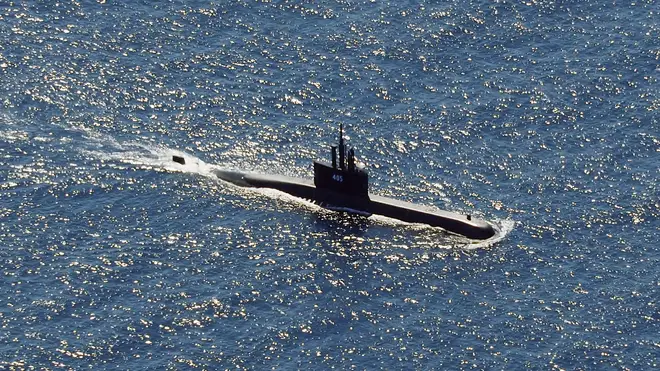
Richard Spurr 1am - 4am
23 April 2021, 06:54

The KRI Nanggala has less than a day’s worth of oxygen remaining for its 53 crew.
Rescuers continued an urgent search on Friday for an Indonesian submarine that disappeared two days ago and has less than a day’s supply of oxygen left for its 53 crew.
The KRI Nanggala 402 went missing after its last reported dive Wednesday off the resort island of Bali, and concern is mounting the submarine may have sunk in waters too deep to reach or recover.
The Indonesian navy chief said the submarine was expected to run out of oxygen by around 3am local time on Saturday.
“We will maximise the effort today, until the time limit tomorrow (of) 3am,” military spokesperson Major General Achmad Riad told reporters.
There have been no signs of life from the submarine, but the spokesperson refused to speculate on its fate.

A total of 24 navy and other ships and a patrol plane were mobilised for Friday’s search with a focus on the area where an oil slick was found after the submarine disappeared during an exercise. Rescuers made similar massive searches in the past two days.
An Australian warship equipped with a sonar device and a helicopter was set to arrive on Friday. A second Australian warship as well as Singaporean and Malaysian rescue ships were also expected in the coming days.
President Joko Widodo has asked all Indonesian people to pray for the crew’s safe return, while ordering all-out efforts to locate the stricken submarine.
“Our main priority is the safety of 53 crew members,” Mr Widodo said in a televised address on Thursday. “To the family of the crew members, I can understand your feelings and we are doing our best to save all crew members on board.”

The navy has said it believes the submarine sank to a depth of 2,000-2,300 feet, much deeper than its collapse depth — the depth at which water pressure would be greater than the hull could withstand.
The sub’s collapse depth was estimated at 655 feet by a South Korean company that refitted the vessel in 2009-2012.
Navy chief of staff Admiral Yudo Margono said an unidentified object with high magnetism was located at a depth of 165 to 330 feet, with officials hoping it was the submarine.
The cause of the disappearance is still uncertain. The navy has said an electrical failure could have left the submarine unable to execute emergency procedures to resurface.

In addition to the rescue ships sent by Singapore and Malaysia, offers of help have come from the US, Germany, France, Russia, India, Turkey and South Korea.
Pentagon press secretary John Kirby said the US was sending airborne assets to assist in the search.
“We are deeply saddened by the news of Indonesia’s lost submarine, and our thoughts are with the Indonesian sailors and their families,” Mr Kirby said.

Submarine accidents are often disastrous.
In 2000, the Russian nuclear submarine Kursk suffered internal explosions and sank during manoeuvres in the Barents Sea. Most of its 118 crew died instantly, but 23 men fled to a rear compartment before they later died, mainly of suffocation.
In November 2017, an Argentine submarine went missing with 44 crew members in the South Atlantic, almost a year before its wreckage was found at a depth of 2,625 feet.
But in 2005, seven men aboard a Russian mini-sub were rescued nearly three days after their vessel became snagged by fishing nets and cables in the Pacific Ocean. They had only six hours of oxygen left before reaching the surface.